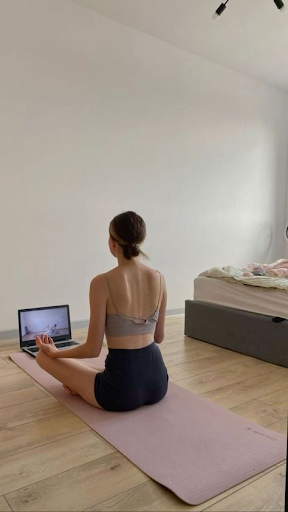Mindful Breathing Exercises: Harnessing the Power of Breath for Stress Reduction
## Mindful Breathing Exercises: Harnessing the Power of Breath for Stress Reduction
In an age where stress and anxiety have become commonplace, finding effective methods to manage these feelings is essential for overall well-being. One of the simplest yet most powerful techniques for stress reduction is mindful breathing. This practice not only helps calm the mind but also enhances focus, emotional regulation, and physical health. This article explores the principles of mindful breathing, its benefits, and practical exercises you can incorporate into your daily routine.
### Understanding Mindful Breathing
**What is Mindful Breathing?**
Mindful breathing is a form of meditation that emphasizes awareness of the breath. It involves paying attention to each inhalation and exhalation while observing thoughts and sensations without judgment. This practice encourages individuals to anchor themselves in the present moment, fostering a sense of calm amid life’s chaos.
### Benefits of Mindful Breathing
1. **Stress Reduction**: Mindful breathing activates the body’s relaxation response, helping to lower cortisol levels and reduce feelings of stress and anxiety.
2. **Improved Focus and Concentration**: By training your mind to focus on your breath, you enhance your ability to concentrate on tasks, leading to increased productivity.
3. **Emotional Regulation**: Regular practice can help you become more aware of your emotional responses, allowing you to respond thoughtfully rather than react impulsively.
4. **Physical Relaxation**: Mindful breathing promotes relaxation in the body, reducing muscle tension and improving overall physical comfort.
5. **Enhanced Self-Awareness**: This practice encourages introspection and self-reflection, helping you better understand your thoughts, feelings, and behaviors.
### Practical Mindful Breathing Exercises
Here are several effective mindful breathing exercises that can be easily integrated into your daily routine:
#### 1. Basic Mindful Breathing
**How to Do It**:
- Find a comfortable seated position with your back straight.
- Close your eyes or soften your gaze.
- Take a deep breath in through your nose, allowing your abdomen to expand.
- Exhale slowly through your mouth or nose.
- Focus on the sensation of your breath entering and leaving your body.
- If thoughts arise, acknowledge them without judgment and gently return your focus to your breath.
- Continue for 5-10 minutes.
#### 2. The 3-Minute Breathing Space
This quick exercise is perfect for busy individuals looking for a brief moment of mindfulness.
**How to Do It**:
- **Minute 1**: Check in with yourself. Ask, “How am I doing right now?” Notice any feelings or sensations without judgment.
- **Minute 2**: Shift your awareness to your breath. Focus on the rhythm of inhalation and exhalation.
- **Minute 3**: Expand your awareness beyond your breath to feel how it affects your entire body. Notice any changes in tension or relaxation.
#### 3. Counted Breathing
Counting can help maintain focus during mindful breathing.
**How to Do It**:
- Sit comfortably with a straight back.
- Inhale deeply for a count of four.
- Hold the breath for a count of four.
- Exhale slowly for a count of four.
- Pause for another count of four before inhaling again.
- Repeat this cycle for several minutes.
#### 4. Diaphragmatic Breathing
This technique encourages deeper breaths that engage the diaphragm.
**How to Do It**:
- Lie down or sit comfortably with one hand on your chest and the other on your abdomen.
- Inhale deeply through your nose, feeling your abdomen rise while keeping your chest still.
- Exhale through pursed lips, noticing how your abdomen falls.
- Focus on making each inhalation and exhalation smooth and steady.
#### 5. Visualization with Breath
Combining visualization with mindful breathing can enhance relaxation.
**How to Do It**:
- Sit comfortably and close your eyes.
- Take a few deep breaths to settle in.
- As you inhale, visualize drawing in calmness or light; as you exhale, imagine releasing tension or darkness.
- Continue this visualization while focusing on your breath for several minutes.
### Incorporating Mindful Breathing into Daily Life
To reap the benefits of mindful breathing consistently:
- **Set Aside Time**: Dedicate specific times each day for mindful breathing practice—morning, lunch breaks, or before bed can be ideal moments.
- **Use Reminders**: Set reminders on your phone or place sticky notes in visible areas to prompt you to take mindful breathing breaks throughout the day.
- **Practice During Transitions**: Use moments of transition—waiting in line, commuting, or during breaks—to practice mindful breathing.
### Conclusion
Mindful breathing is a powerful tool for managing stress and enhancing overall well-being. By dedicating just a few minutes each day to this practice, you can cultivate a greater sense of calm and clarity in your life. Whether you choose basic mindful breathing techniques or incorporate visualization and counting methods, remember that consistency is key. Embrace the power of breath as an anchor amidst life’s challenges, allowing it to guide you toward relaxation and peace.


Comments
Post a Comment